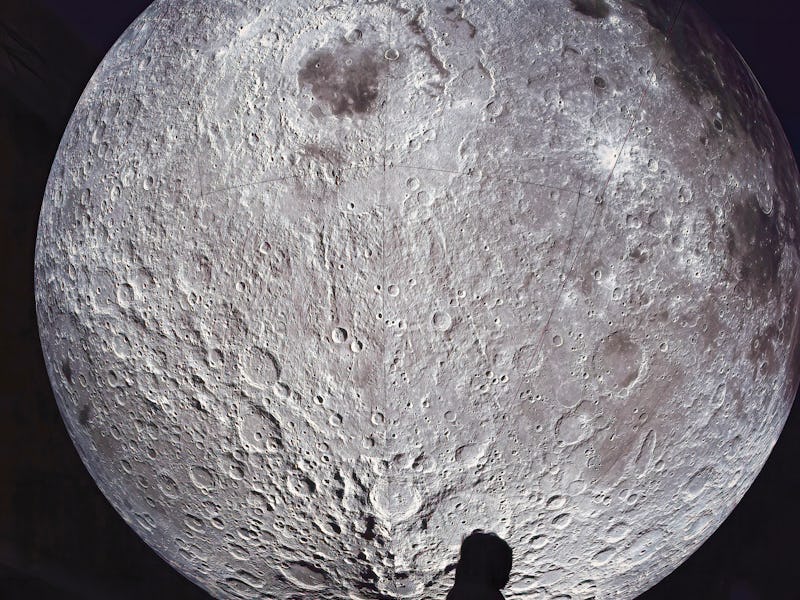VIPER: Why the Moon rover’s mission is vital for future space exploration
NASA has selected the landing site for its VIPER rover.

NASA has finally decided where VIPER will land on the Moon.
VIPER — the Volatiles Investigating Polar Exploration Rover — is a robot mission designed to scout for frozen water and other resources on the lunar surface.
On Monday, NASA announced the autonomous VIPER vehicle — which is about the size of a golf cart — will touch down near the western rim of the Nobile Crater at the lunar south pole in 2023. It will spend at least 100 days exploring multiple lunar environments in this mountainous region.
The VIPER mission is part of NASA’s larger Artemis program, which aims to return humans to the moon by 2024, and reconnaissance VIPER provides during its sojourn at the lunar south pole could be crucial to those efforts.
An illustration of VIPER on the Moon.
VIPER is expected to advance our understanding of the formation and evolution of the Moon. It could inform future crewed Artemis missions since water is both essential for long-term human occupancy and a potential source for handy items in space, like rocket fuel. Lunar ice is one of the resources VIPER is looking for.
“We seek answers to some pretty complex questions and studying these resources on the Moon that have stood the test of time will help us answer them,” VIPER Lead Project Scientist Anthony Colaprete said in a press statement.
What’s new — The VIPER mission has been aimed at the Moon’s south pole since VIPERs inception in 2019, but exactly where the rover should land to do the best science was the topic of extended and meticulous research.
While the region west of the Nobile Crater is mountainous, NASA determined it is accessible by the rover — and will also provide access to small craters of scientific interest nearby.
In this video, NASA takes you on a virtual tour of the Nobile Crater.
VIPER team scientists have already planned the 10 to 15-mile route during the rover’s 100-day mission. This route includes stops for at least six sites of interest as well solar charging and warming pit stops — the floors of some craters in the region, cast in permanent shadow, can measure a chilling negative 414 degrees Fahrenheit.
Why does the VIPER landing site matter?
The Moon’s south pole is already well mapped due to past NASA missions like the Lunar Reconnaissance Orbiter. Evidence suggests it offers a completely different landscape when compared to the equatorial landing sites of the Apollo missions.
But aerial mapping is just one small slice of the pie. When it comes to surface exploration, VIPER will be charting new territory around Nobile Crater.
A glance at the Nobile crater captured by Lunar Orbiter 4.
NASA orbital missions suggest the Moon’s south pole contains water ice — particularly in the deep, permanent shadows of some mountains and craters. Such water could contain information from deep in the moon’s past, making it a prime target for lunar scientists.
VIPER will help map and detail what water and other resources could be utilized by future Artemis crew missions, which will also explore the southern polar region.
What is VIPER?
A decidedly non-serpentine vehicle despite its mission acronym, VIPER is a four-wheeled rover wrapped in gold foil and packed with tools.
VIPER will hunt for sub-surface water using a Neutron Mass Spectrometer, and then drill up to three feet beneath the lunar regolith to take samples using its Regolith and Ice Drill for Exploring New Terrain, or TRIDENT.
NASA’s VIPER lunar rover in testing.
To analyze samples and detect whether they contain water, VIPER also packs the Mass Spectrometer Observing Lunar Operations (MSolo) and the Near InfraRed Volatiles Spectrometer System.
Are there any other rovers on the Moon?
VIPER may share the Moon with a few roommates when it lands.
At the present, the only rover operating on the moon is the Chinese Yutu-2 Rover, which has explored the dark side of the Moon since January 2019.
But other rover missions may beat VIPER to the Moon if they launched as scheduled, including:
- The Indian Space Research Organization’s Chandrayaan-3 rover
- The United Arab Emirates Rashid Rover
Both are scheduled to launch in 2022.
When will VIPER launch?
If all goes as planned, VIPER will launch aboard a SpaceX Falcon Heavy rocket in November 2023.
The launch is part of NASA’s Commercial Lunar Payload Services program, which contracts with commercial space companies to send vehicles to the moon to search for resources. VIPER will be delivered to the lunar surface by the Giffin Lander manufactured by Astrobotic Technologies.